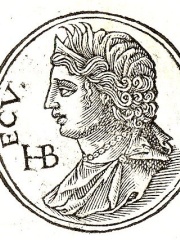


The Most Famous
COMPANIONS from Turkey
This page contains a list of the greatest Turkish Companions. The pantheon dataset contains 784 Companions, 3 of which were born in Turkey. This makes Turkey the birth place of the 30th most number of Companions behind Israel, and Serbia.
Top 3
The following people are considered by Pantheon to be the most legendary Turkish Companions of all time. This list of famous Turkish Companions is sorted by HPI (Historical Popularity Index), a metric that aggregates information on a biography’s online popularity.
1. Hecuba (b. )
With an HPI of 73.77, Hecuba is the most famous Turkish Companion. Her biography has been translated into 47 different languages on wikipedia.
Hecuba (; also Hecabe; Ancient Greek: Ἑκάβη, romanized: Hekábē, pronounced [hekábɛ:]) was a queen in Greek mythology, the wife of King Priam of Troy during the Trojan War.
2. Gülfem Hatun (1500 - 1561)
With an HPI of 73.27, Gülfem Hatun is the 2nd most famous Turkish Companion. Her biography has been translated into 22 different languages.
Gülfem Hatun (Ottoman Turkish: کلفم خاتون; meaning "rose mouth", died October– November 1561) was a lady-in-waiting in the harem of Ottoman sultan Suleiman the Magnificent (reign 1520–1566).
3. Laodice I (-300 - -260)
With an HPI of 60.01, Laodice I is the 3rd most famous Turkish Companion. Her biography has been translated into 22 different languages.
Laodice I (Greek: Λαοδίκη, Laodíkē, meaning "justice of the people"; flourished 3rd century BC) was a Greek noblewoman of Anatolia who was a close relative of the early Seleucid dynasty and was the first wife of the Seleucid Greek King Antiochus II Theos.
People
Pantheon has 3 people classified as Turkish companions born between 300 BC and 1500. Of these 3, none of them are still alive today. The most famous deceased Turkish companions include Hecuba, Gülfem Hatun, and Laodice I.

